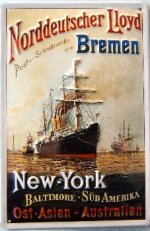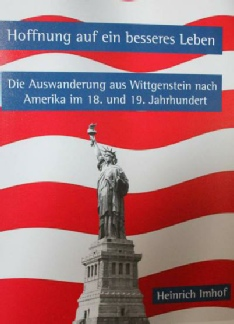 The following articles (all in PDF format) document particular aspects of the migration of Riedesels and related families primarily from the area of Wittgenstein to the United States. They do not tell the full stories of individuals, which we cover in the biography section.
The following articles (all in PDF format) document particular aspects of the migration of Riedesels and related families primarily from the area of Wittgenstein to the United States. They do not tell the full stories of individuals, which we cover in the biography section.
- Causes for Emigration From the German Counties of Wittgenstein (Karl-Ernst Riedesel)
- Wheatland As The New Wunderthausen (Dr. Paul Riedesel)
- Continuities in Church Life Among Emigrants to America: The Special Case of St. Paul’s Church in Wheatland, Iowa (Dr. Paul Riedesel)
- Why the Riedesels Went to Ohio in 1844/1845 (Dr. Paul Riedesel, Revised 2016)
- Lost No More-The Final Resting Place of Our Ancestors near Galion, Ohio (Dr. Paul Riedesel, Revised 2016)
- Wunderthausen Emigrants in Oxford, New Jersey (Dr. Paul Riedesel)
- The Riedesels Emigrating from Alsace-Lorraine (Dr. Paul Riedesel)
- Descendants of Peter Riedesel (1839-1891), the father of the Riedesels from Alsace-Lorraine
- Ancestors of these Riedesels from Alsace-Lorraine: Marie (Zehner), John Henry, and Peter
If you have at least a reading knowledge of German, I would strongly recommend a recent book written by my friend and colleague, Heinrich Imhof. It is an impressive study of the migration from Wittgenstein to the United States with the title Hoffnung auf ein besseres Leben: Die Auswanderung aus Wittgenstein nach Amerika im 18. und 19. Jahrhundert. Information is available on a webpage of the Wittgensteiner Heimatverein (scroll down the page a ways).

One gap in my knowledge concerns the routes by which the Wittgensteiners got to the Midwest. I also lack information about the agents who played a major role in getting would-be emigrants from Europe to a desired place in America. They sold package deals and favored waterways (canals, rivers and even the Great Lakes) whenever possible. Railroads became more important over time but were relatively more expensive.
The Iowa Historical Society created this map showing the route taken by an unrelated emigrant from New York to Davenport. I bet many of our people followed a similar itinerary. Another alternative that I know was followed was via the Ohio River to the Mississippi and then to St. Louis or Davenport. A few entered the U.S. in New Orleans, though that was never as significant a point of entry as Philadelphia (in colonial times), Baltimore and ultimately New York.